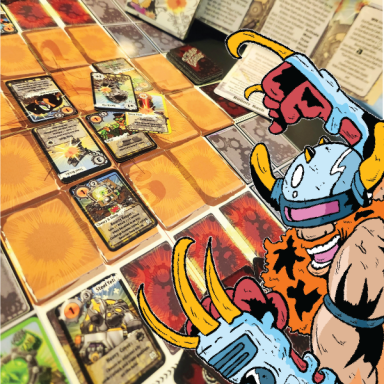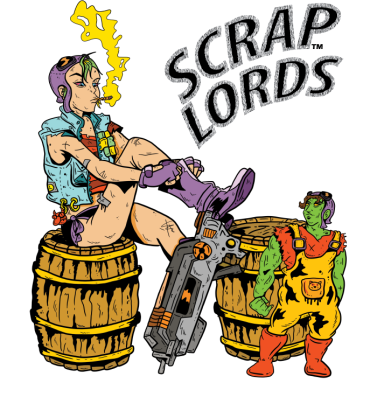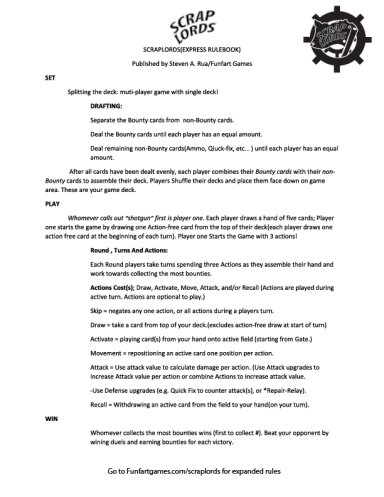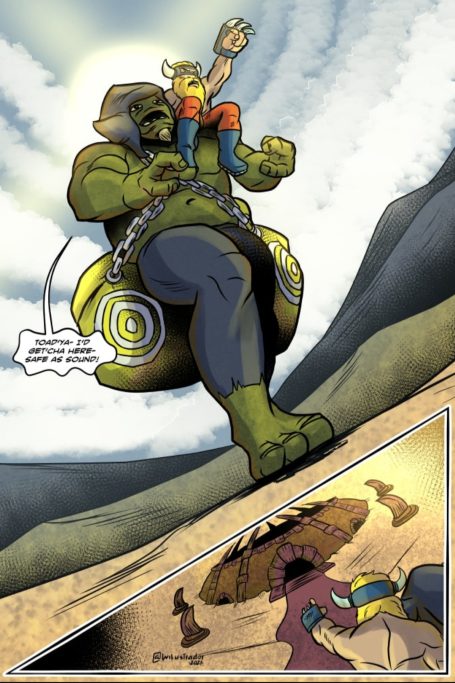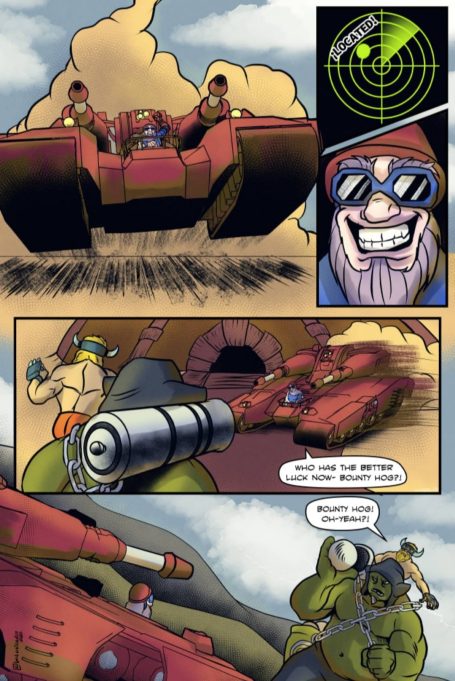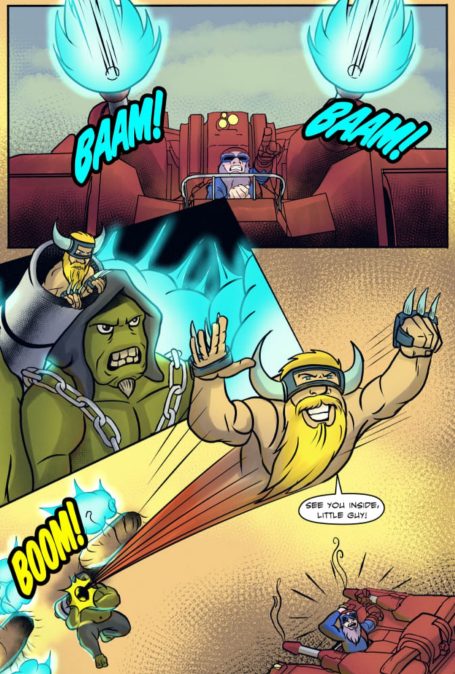Scraplords: BountyBash TCG !
(At The Game Crafter)
Welcome to ScrapLeagueTV!
This is Scraplords: Bounty Bash- a thrilling trading card game set in a post-apocalyptic world. Build your deck with salvaged weapons, outsmart opponents, and battle for control. Join the ScrapLeagueTV community and get early access to new expansions. Nft Collection Droping on Opensea, Rariable, and more.
Explores Exclusive NFT Collectibles HERE
$BBUCKS
$BBUCKS(BBS) will serve as the primary currency for purchasing in-game items, exclusive content, and limited edition NFTs within the Scrplords Games platform.
We Are KnuckleHeadOG's- Excelsior!
Welcome KnuckleHeadOG's, these ultimate skateboarding degens are creators with a rebellious spirit and a love for creating Art. Whether its anime, comics, or metaverse gaming, KnuckleHeadOG's lives are a whirlwind of vibrant art that screams for your attention. Despite their financial struggles and job instability, they dream of W3B wealth and achieving financial freedom. With a unique hype-beast style and a passion for the latest fashion trends, KnuckleHeadOG's are on a relentless pursuit of their dreams, blending art, culture, and digital innovation with an unmistakable rebellious edge aiming to create a rich community of Buyers, Sellers, and Collectors. Excelsior!
Official Rules (beta)
Scraplords:
Bounty Bash! (TCG)
SET.PLAY.WIN!
( Copyright. All Rights Reserved )
SET.
Setting up the game (with a Game Mat)
Welcome to Scraplords... You Beautiful Bounties!
Diagram (1)
! If you are a Returning to the game- skip the multi-player setup below. Use your Custom Deck of 72 cards and Scrap !
Welcome To Scrap Lords: Bounty Bash!
How to play a multi-Player Game with one Deck:
Drafting using the default Deck of 72 cards, ScrapLords
Deal the cards evenly; separating the cards into two piles- Bounty Cards and Non-Bounty cards. (see Diagram 2-3)
Diagram (2)
(E.g., Bounty cards above. Note the Bounty value at the bottom right corner of each card.)
Diagram (3)
(E.g., Non-Bounty cards above. Note the missing Bounty value at the bottom right corner of each card.)
(Summary of Draft: You should have two separate piles; one pile of Bounty cards and one Pile of Non-Bounty cards. All players must combine and shuffle all their Cards. This ends the draft phase.)
Set; (Drafting a two player Game with one Deck)
- Separate all Bounty and Non-Bounty cards.
Vs.
- Deal all cards until each player has an equal amount of Bounty and Non-Bounty cards.
- Combine all of your cards and shuffle. Each player should have an even amount of Bounty and non-Bounty cards in their drafted Deck). ! (Whomever calls shotgun first is player one; or, whomever claims the most Bounties at start of game wins initial draw. That is Player one.)
Play; (Multi-Player Game with movement; Standard Game Board and Starter Deck Rules apply).
- Each player draws five cards from the top of their Deck; Player one draws one additional card to start the Game; This Action-free Draw begins the game. (Each player gets an action-free Draw to begin their turn each round) Let’s Scrap!
- Each Player has three Actions to use during their turn: (Combine actions and/or mix and match actions to increase Attack and /or Strategy during your action(s) phase(s); Player can choose to forfeit any, or all, actions during their turn(s) phase- penalty free.)
- Actions; Any Damage(s), condition(s), and/or Affect(s) caused by Actions during that player’s active turn- expires at the end of that player’s action phase (condition(s) may apply).
7a. Activate a Card (costs 1-3 Action(s) per).
7b. Movement; Costs 1-3 Action(s) per Tile(s).
! (Only Cards with Attack & Defense Value can move on active Field).
7c. Draw; Costs 1-3 Action(s) (Plus one Action-Free Draw each new turn).
7d. Recall; Cost 1-3 Action(s) per Active card.
7e. Attack; Cost 1-3 Action(s) Per Attack (Team Attacks, Duel for Position rules apply).
- Defense: (Defending a Target Cards position when under Attack).
*If the Value of an Attack is Equal to or Greater than defense Value (After calculating Upgrades), the Attack is Successful; Place defeated card(s) face down, in position, until claimed by an Active card. Place all Claimed cards into their owners Back-Lot(s).
*If the Attack Value is Less than target cards Defense Value (After calculating Upgrades) the Attack is not successful- move on to the next Action, Turn, or Phase. (Defense Upgrades are played in response to being Attacked)
Win; Claim and Secure eight (or more) Bounty cards in your Back-Lot to Win the Game).
See Game Rules at www.Youtube.com/@ScrapleagueTv
! If you Draw any Bounty Items (and Resource Perks), Claim them by placing them directly into your Back-Lot to increase Points (and Field Perks).
! Duel to Claim your opponent’s Bounties as you make your way across field to Score at their Gate(s).
! And/or reach your opponent’s Gate Tile(s) and Claim one of their unsecure Bounties*(Unsecure Bounty*; A Bounty is considered Claimable When placed into a Back -Lot, or Defeated in a Duel (Deal with Back-Lot Defense First).
7a. Activating a Card-
Diagram (4)
To Activate a Bounty Card place onto a gate tile (costs 1 Action). Once a card is placed onto a gate tile the card is considered active and you can now initiate Bounty-Movement*(Bounty Movement*; A one-time movement perk upon Activating a new card through your gate tiles).
Each Bounty Character is allowed a free movement based on their Bounty Value. Upon activation, specify wether or not you are using bounty Movement Perk upon acctivating a new card. Bounty Movement is based on Bounty Characters Bounty Value (see Diagram ). This activation Perk is only during activation phase only.
Active cards can Move, Attack, Set Traps, and can be Recalled from active position to owner’s hand (Players can also choose to Draw). Each option cost one Action. You can combine Actions or use Actions individually.
7b. Movement- (Standard Grid Movement Applies; up(y), Down(-y), Left(-x), and Right(x). Diagonal Tiles are considered Out of Current Attack Range*; Tiles that are beyond a cards current Attack Position; Adjacent tiles can be Attacked without moving into position (With playable actions available to active player)). Tiles that are more than one position away from current position are considered out of Attack Range (See, Diagram 4). Range is based on 8x6 grid made up of 3x4” rectangular tiles (Grid = 24x24” game board with 48 tiles grid.
Diagram (5)
Moving a card costs 1 Action per tile (field effects vary). An active card can move in ANY direction if owner has actions to play during their turn (or Bounty Perks use).
Duel for Position; if you want to take a Position already occupied by your Opponent’s Card(s), it cost one Action (Plus, attacking Player gains x1 Attack Value for initiating the Duel). Moving into an Enemy occupied tile is considered Dueling for position*(*Dueling for position; When an Allied card moves onto an Enemy occupied “current” position). If You lose a Duel for position, return Attacking card to its previous position (See Dueling* for calculating Attack and Defense Damage.)
7c. Draw-
Action Draw- Drawing a card requires an available Action on a players turn (Resource Perks vary).
Action-Free Draw- Each Player can draw one card from the top their Deck at the beginning of their new turns.
7d. Recall-
Recall an active card from the field to your hand on your turn for one Action; If you have actions remaining.
7e. Attacking-
Action(s) x (Attack Upgrades + Ammo); Per Action bases.
7e; Player must specify attack damage on an Action-by-Action bases (unless combined actions); Attacking Player must Declare how many actions they intend to combine before adding any Attack upgrades (e.g. Ammo)).
Attack order;
Choose a target Card in Range*(Adjacent Attack, or Dueling for position. See diagram below for grid reference).
Next, select how many Attack* Actions to apply (Add Upgrades to increase Attack total per action(s)). Calculate total damage to target card(s). If damage is equal to or greater than target cards defense, and/or the defending card is unfit to continue to move on to the next Action, The Attacker wins the duel.
You have successfully dueled for position… Move into position and Claim* that Bounty (Claiming Bounty Cards; Any card placed into your Back Lot is considered Claimed Standard Rules Apply; see Bounty Vs. Non-Bounty card diagram on pg. 1)).
Diagram (6)
Team Attacks; (Ally’s Attack value is Applied at the end of your Attack Action(s)).
For one Action per turn, when attacking a target card, and Attacking Player has an Ally Adjacent to Target card, Player can choose to use one Attack value, for one Acton, from adjacent Ally’s Attack Value (located in the orange icon in the top left corner of each bounty card). If Attack is Successful move your Ally into position of defeated card (see, Duel for Position) and Claim that Bounty. Finish your turn.
Diagram (7)
Order of defensive operations for Starting Duels;
Attack Order;
1st Choose Target card(s) (In Range*),
2nd Apply Condition/Affect/Skill card(s),
3rd Apply Upgrades and Ammo, and then Calculate Total Attack damage to target card (Apply Team Attack Bonus at the end of your Attack Action (once per turn)).
Defense Order;
Defending a Position;
The Defense Value of each card is located at the top left corner (in the Grey Icon) of each Bounty card (See Diagram 2).
The Defense value of each card must be negotiated after your opponent Specifies total Attack for their Action(s).
Diagram (8)
When your Opponent Attacks…
Tally the total Attack before calculating any Defense. During this Defense Phase, If you have any upgrades to apply calculate the increase to your cards base defense (See, Duel for Position). Each Attack must be dealt with individually (Sect. 7e).
Order of Defense Operations;
1st Defend against Ranged and Adjacent Attacks (see Diagram 4);
Then,
2nd Defend Movement (sect. 7e);
Then,
3rd Defend Upgrades, Quick Fix, First strike,
Team Attack (Apply any and all that qualify)
! Calculate total incoming damage to target(s) position. (Dueling for Position, or Ranged Attack?)
Ranged Attacks (including Adjacent Attacks) can beat and deactivate a card, but you can only claim a bounty card by moving into its current position (Dueling for Position).
Apply Defensive upgrades,
Add up the defense value,
and calculate Total Defense.
If your defense Value is greater than opponents Attack Value, you have successfully Defended this attack
(This is considered defending a Duel*; Defending an Attack).
Order of defensive operations for defending Duels;
1st deal with Traps*, 2nd Deal with Field Conditions*/Affects, and 3rd deal with Quick Fix.
Calculating Damage-
Winning a duel; you win a duel when you successfully Deal more Attack damage than your opponent can Defend (per Action, and/or Combined Actions). Any Damage Equal-to or Greater than defense wins the Duel (Cards can be withdraw from a Duel instantly with auxiliary cards like “Tele-Portal”, and “Bargaining Chip”).
Diagram (9)
- Using The Game Board(s) and/or Game-Mat(s);
The Game Mat is based on an 8x6 Grid system with four Gate* Tiles at either end (Between 4 Back-Lot tiles on either side). The Game mat should be orientated so that each player has a set of four gate tiles in front of them with four Back-Lots Tiles to the left and Four Back-Lots Tiles to the Right). Each type of Tile on the grid serves different functions (e.g., Gate* Tiles, Back-Lot* Tiles, Field* Tiles, Deck Position, and Discard Pile (Scrap-Pit).
Diagram (10)
© Copyright. All rights reserved.
We need your consent to load the translations
We use a third-party service to translate the website content that may collect data about your activity. Please review the details in the privacy policy and accept the service to view the translations.










